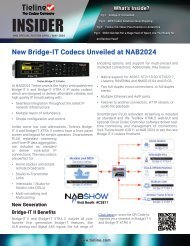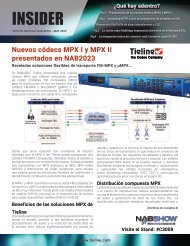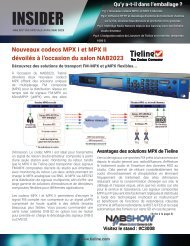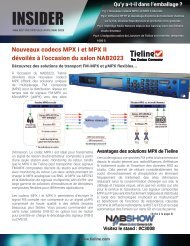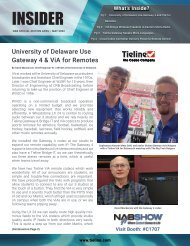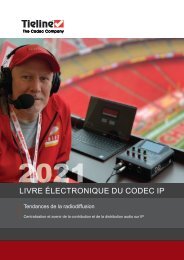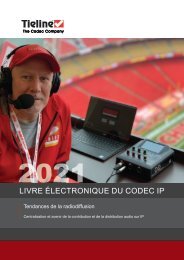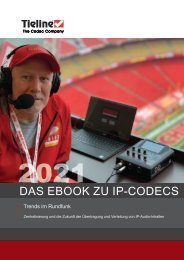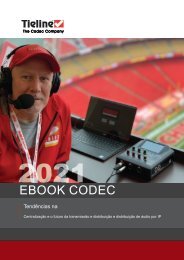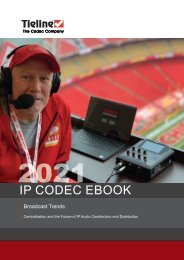(English) 2019 eBook
The Latest Trends in Remote IP Codecs - IP has become the predominant technology for streaming live remote broadcasts. This eBook outlines the latest innovations delivering flexible and powerful solutions to broadcasters around the world.
The Latest Trends in Remote IP Codecs - IP has become the predominant technology for streaming live remote broadcasts. This eBook outlines the latest innovations delivering flexible and powerful solutions to broadcasters around the world.
- No tags were found...
Create successful ePaper yourself
Turn your PDF publications into a flip-book with our unique Google optimized e-Paper software.
TO SIP OR NOT TO SIP, THAT IS<br />
THE QUESTION…<br />
Tieline Insider decided to<br />
grill Jacob Daniluck, Tieline’s<br />
Technical Sales Specialist<br />
Americas, about the<br />
importance of SIP and why<br />
and when you should use<br />
it. Plus, we asked for some<br />
tips on how to get connected<br />
more easily over SIP.<br />
Insider:<br />
Jacob what is SIP and why is it important to broadcasters?<br />
Jacob:<br />
Well SIP has been around for a while now and basically it’s the EBU N/ACIP standard<br />
of interoperability that allows different IP codec brands to interconnect. It’s important to<br />
broadcasters for two main reasons. First, if you have Tieline codecs and another broadcaster<br />
you are connecting to has say Comrex codecs, it allows you to connect both brands and<br />
seamlessly stream IP audio between them. Another reason is that you may have existing<br />
codecs from one manufacturer, but want to purchase from another manufacturer, SIP<br />
allows you to connect between both – which extends the life of older codecs and allows<br />
flexibility when upgrading the broadcast plant.<br />
Insider:<br />
How easy is it to connect over SIP?<br />
Tieline: The Codec Company<br />
13




